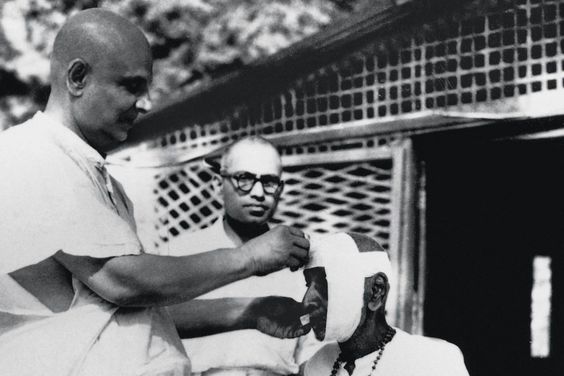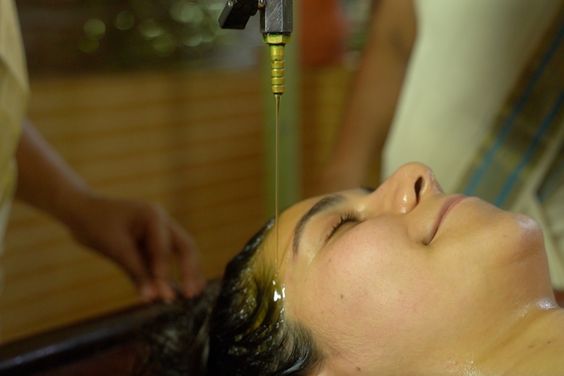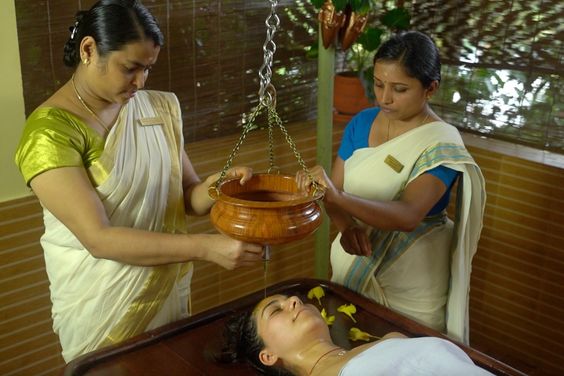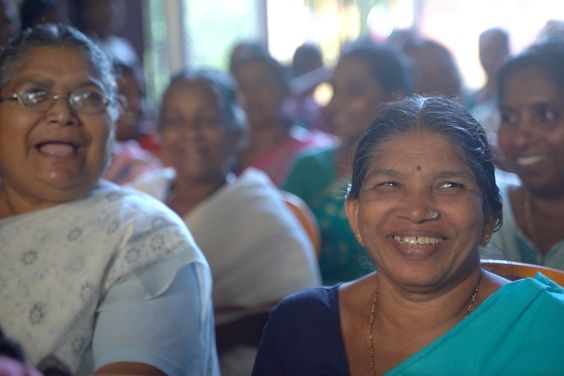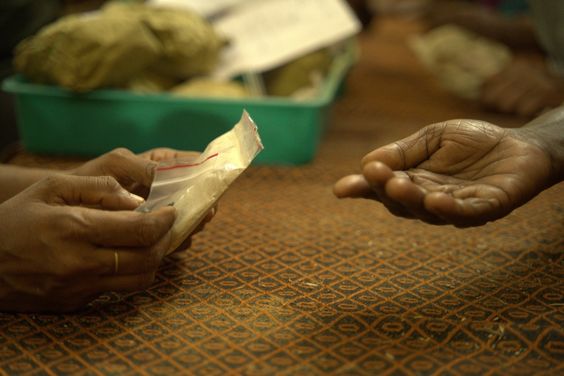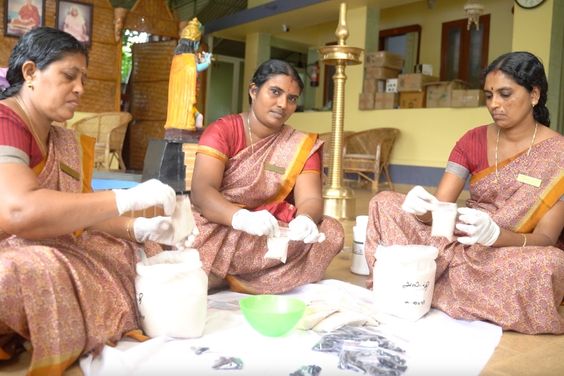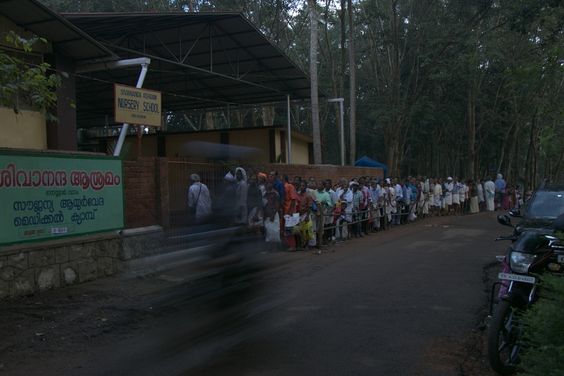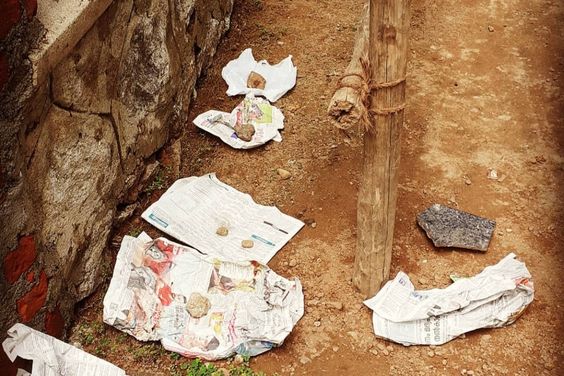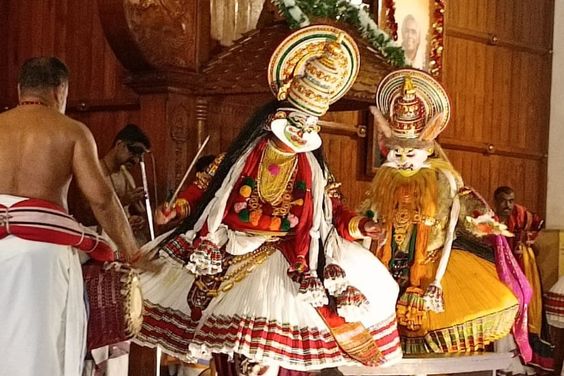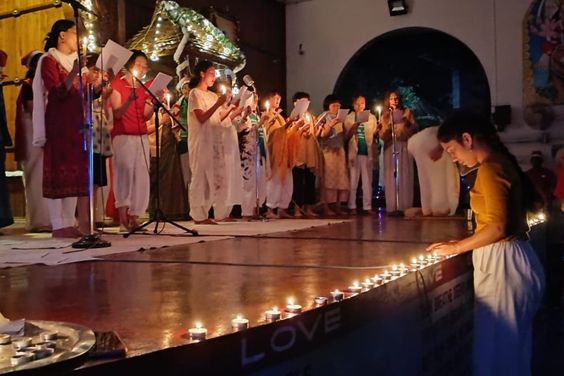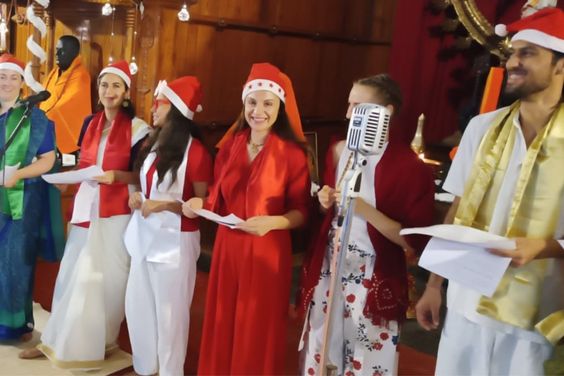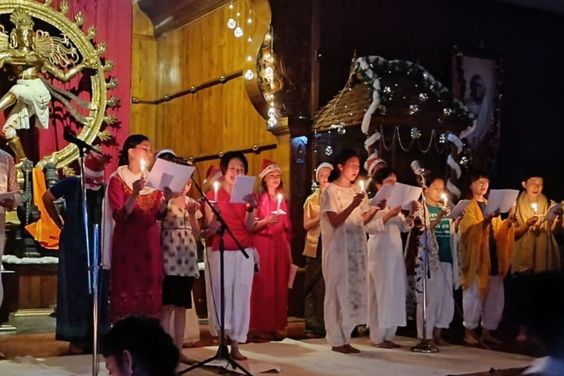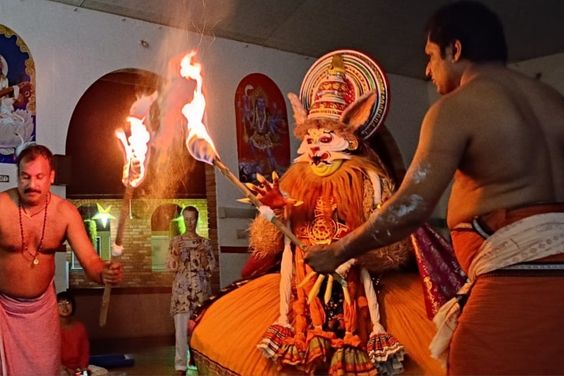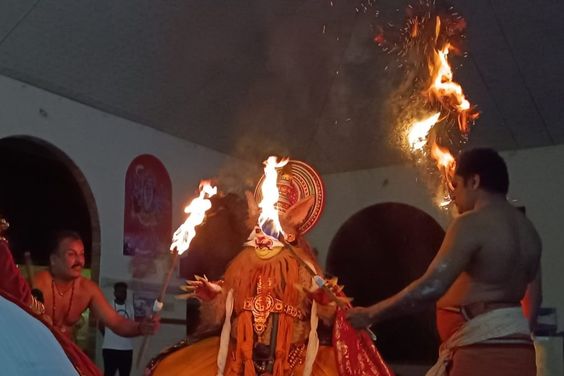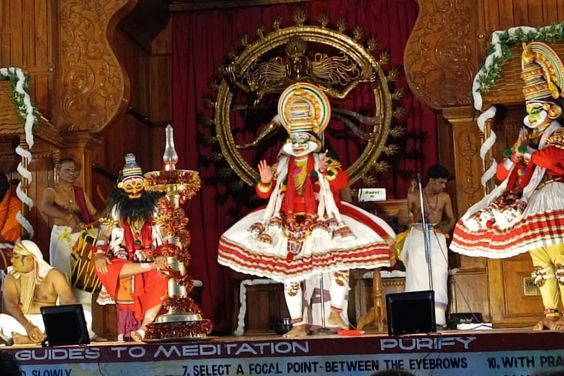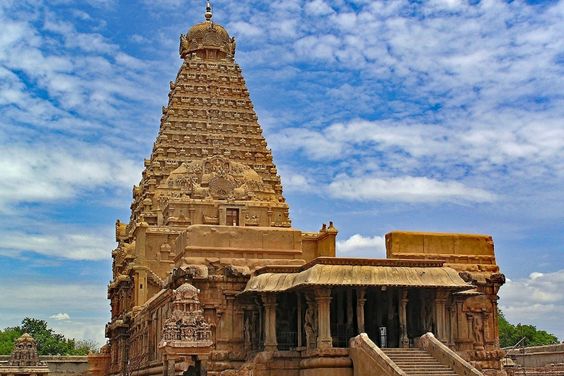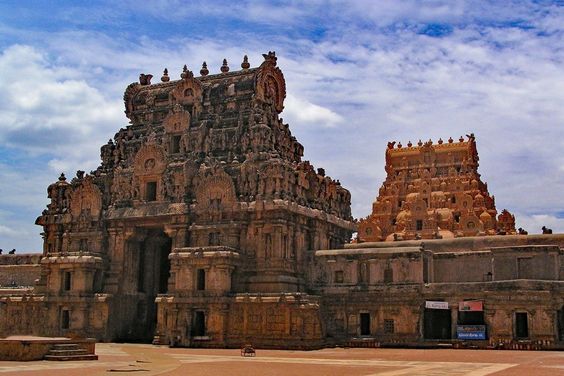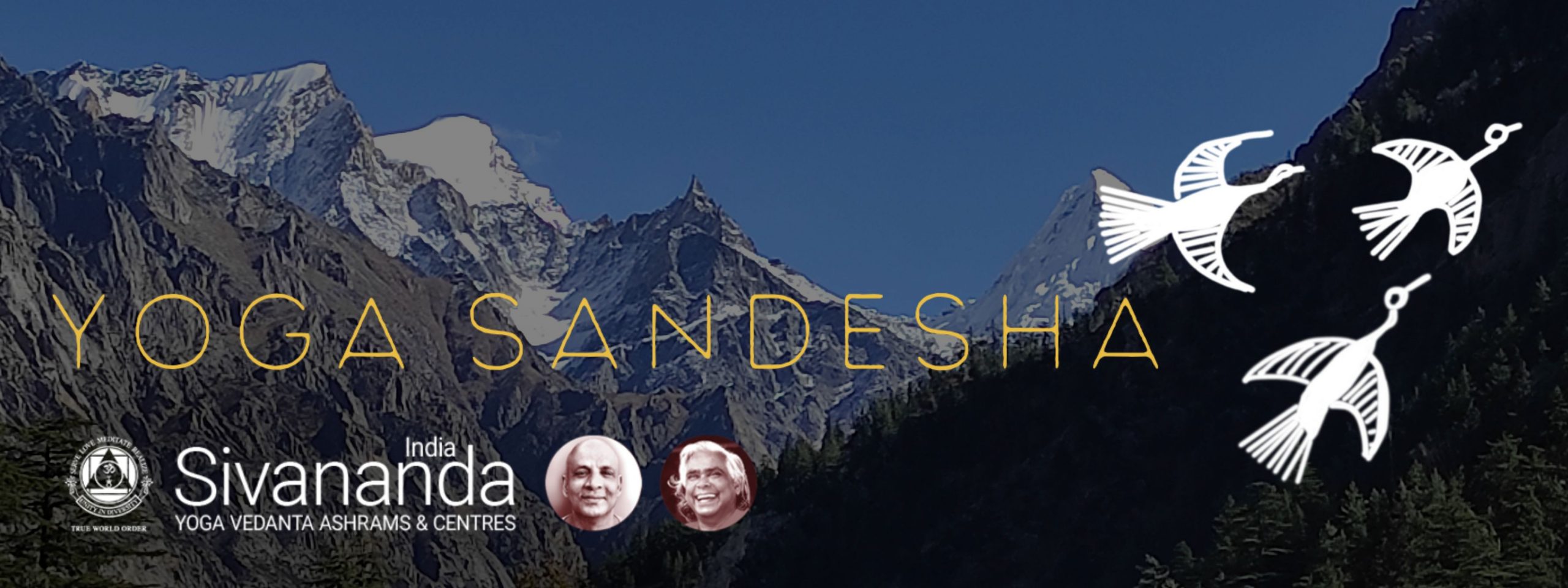
January 2023 | Health is Wealth
Om Namah Sivaya
Blessed Self,
We wish you all a happy and prosperous new year full of sadhana and service.
Swami Vishnudevanandaji’s slogan to humanity was Health is Wealth, Peace of Mind is Happiness, Yoga Shows the Way. During the past three years many of us around the globe have faced the most challenging times of their lives due to the pandemic. The pandemic is not yet over and those affected are still suffering with stress, anxiety, depression, as well as both physical and mental health issues. Challenging situations with family, work, and other karmic duties have resulted in very little time for self-introspection, hence there has been an increase in mental health issues. As Swamiji stated, yoga can help. We need to embrace the powerful spiritual practices of Yoga and Meditation in order to create physical, mental and spiritual health. This interest in restoring health is currently evident in our ashrams and centres where many are flocking for practice, and to discover their neglected health and peace of mind.
Let’s all create a brighter future by taking care of ourselves, so that we, in turn, can take care of others who depend on us. Practice and discipline are the two important things that can show us a brighter, more positive life. The tools given to us by Master Swami Sivananda and our Guru Swami Vishnudevananda are there for all of us to use and we just need to take a few steps towards that. All our staff are working hard to keep the teachings alive and to keep our spiritual homes welcoming for people, so please do come and join us to improve both physical and mental health so we can all live with peace and harmony.
Pranams to all,
Sivananda Yoga Vedanta Ashrams & Centres, India
According to the World Health Organisation, health is a fundamental right of every human being. Health is fundamental to the attainment of peace and security for all. It is a state of complete physical, mental, and social well-being, and not just the absence of disease. It seems clear that health is subtle, involving a number of factors, both personal and social. Health is also fundamentally a positive state, and one worthy of our time, and careful attention.
In this issue of Yoga Sandesha we spotlight a few more subtle practices which are important to our overall state of health: sound sleep, the breath, Shirodhara, proper nutrition. Simple, yet profound things that can encourage a state of health. We’d love to hear what “health” means to you. Do you have it? Have you had a powerful experience of recovering your state of health? What did you learn? We’d love to share some of your thoughts on what “health” means in a future issue and welcome any contributions you’d like to make.
Kindly write us at: [email protected]
News Item:
Shirodhara Therapy
at Sivananda Institute of Health,
Neyyar Dam
Shirodhara is an ancient Ayurvedic therapy where a steady, slow stream of medicated oil flows over the forehead or sthapani marma, an area where nerves are highly concentrated. The pressure of the oil on the forehead creates a vibration that reprogrammes the brain waves, while the oil satiates the forehead and scalp and penetrates the nervous system.
The gentle pressure allows the body, mind, and nervous system to relax and experience a deep state of rest. Shirodhara calms the mind and promotes better sleep, alleviates insomnia and fatigue, particularly if it is preceded by Abhyanga or Ayurvedic massage of the full body.
Shirodhara therapy is available at the Sivananda Institute of Health in our ashram in Neyyar Dam, Kerala.
Serve All Projects:
Sivananda Ayurvedic Medical Camp, Neyyar Dam, Kerala
The Sivananda Ayurvedic Medical Camp is a monthly free camp providing free Ayurvedic medical help and medicines to local villages where medical facilities can be very limited. The Camp is funded by the Sivananda Institute of Health and also the Neyyar Dam Ashram. Each month the Camp sees between 700 to 1000, or more patients and has seen approximately 150,000 patients to date, since 2010. Patients line up from early morning (and occasionally overnight) to ensure that they are seen by a doctor. In fact, there is an interesting system used to hold your place in the queue. In one of the corresponding images five women and two men each hold their place in line with a newspaper and a stone. Everyone respects the system and it allows those most in need to comfortably keep their spot secure! The Camp has become an important resource in the community. We hope to offer the Camp more frequently and at a permanent location in future.
To read more about our charitable initiatives please visit: sivanandayoga.org/serveall
To get involved or contribute contact: [email protected]
Photo Update:
Yoga Ayurveda Cultural Programme,
Neyyar Dam, Kerala
Here are some photos of our recent Yoga Ayurvedic Cultural Programme at Neyyar Dam Ashram, December 22 to 31, 2022. This culturally diverse programme brings east and west together in celebration of Christmas and the New Year. Programmes include Indian music, Kalaripayattu (martial art), Kathakali (dance form from Kerala), and workshops on Ayurveda, yoga, Christmas festivities including carol singing, and a visit from Santa Claus.
Upcoming Courses:
Learn, Practise & Grow with Us!
Teachers’ Training Course (TTC)
Jan 8 to Feb 4, Neyyar Dam, Kerala
(English, Farsi, Hindi, Japanese, Malayalam, & Tamil)
Jan 15 to Feb 11, Madurai, Tamil Nadu
Feb 12 to Mar 11, Neyyar Dam, Kerala
Feb 19 to Mar 18, Gudur, Andhra Pradesh
Feb 26 to Mar 25, Madurai, Tamil Nadu
For more details, click here
Advanced Teachers’ Training Course
Jan 22 to Feb 18, Madurai, Tamil Nadu
For more details, click here
Sadhana Intensive
Jan 8 to Jan 21, Madurai, Tamil Nadu
For more details, click here
TTC Refresher Course,
Feb 20 to 26, Neyyar Dam, Kerala
For more details, click here
Walking the Path:
International Women’s Conference
Feb 27 to Mar 5, Online
For more details, click here
Teachings Excerpt:
How To Get Sound Sleep, Swami Sivananda
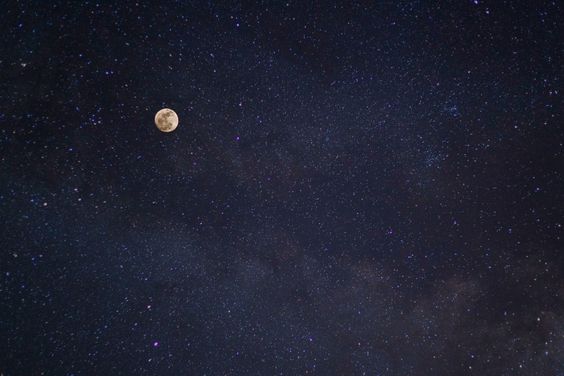
Sleep means rest to all organs. Sleep is Nature’s restorative agent. It supplies abundant energy and rest to the tired brain and nerves and body. Sleep generates a fresh store of nerve force and recoups broken-down cells. Sleep itself is an energy-builder and strength producer.
Even when you are asleep, some eternal principle is ever awake. He is the silent witness of the three states, viz., waking, dream and deep sleep. He is the source, cause, substratum, and support for everything. He is the Lord of lords. He is the Soul of all. The mind rests in him during sleep and derives power, fresh energy and peace.
During work and even when the limbs are resting, the nerves have to work. They also need relaxation. Re-laxation is necessary for health. Sleep gives this relaxation. Perfect relaxation is obtained in sleep.
The new-born child sleeps and sleeps. For the first few days, the child keeps itself awake only 2 hours daily. At the age of five, the child sleeps for 8 to 10 hours. A grown-up man needs six hours of sleep. For a woman, seven hours’ sleep is quite sufficient. For a child in teens 7 to 8 hours’ sleep is enough. Dreaming or disturbed sleep does not give full relaxation. Sleep is diminished after forty years of age.
There have been several instances of famous men who kept fit and active with less sleep than that enjoyed by most people. Scaliger, the great French scholar and contemporary of Shakespeare, slept only for three hours. Wellington and Sir Henry Thompson the famous physicians who attained the age of 80, both considered that four hours’ sleep was sufficient. So did Edison who for 30 years limited his sleep to the same number of hours.
Sleep as a condition of necessary rest, cannot be governed by hard and fast rules. Much depends on a per-son’s physical and mental capacity for resisting fatigue. Everything depends upon the constitution and on the amount of work as well as the kind of work which he does during the day. Those who have reached years of discretion should decide for themselves the amount of sleep they require. Early to bed, early to rise makes a man healthy, wealthy and wise. Stick to this wise maxim.
Sleep with your head towards East. Do not sleep with your head towards North. You can sleep with your head towards West or South. Do not cover your face. Sleeping in the daytime should be avoided especially after a meal, as it induces dyspepsia or indigestion and possibly disease of liver.
The habit of sleeping in the open is highly beneficial. Do not sleep on the backside. Sleep on the left side at night. The food will be digested easily as the Surya Nadi on the right side will be flowing.
You must know the science of relaxation. If you can relax all the muscles, brain and nerves, you will get sound sleep the moment you lie down on the bed. Even while at work, you can relax if you are conversant with this science. You can take a nap even while sitting in the chair when several people are talking and laughing, when there is beating of drums. Relaxation for a few minutes will serve as a great restorer. He who has perfect mental poise can relax and sleep at any time. He who can relax well can turn out much work. Change of work or pose is also rest or relaxation. Laziness is quite different from relaxation. Meditation gives perfect rest.
Empty your bladder and bowels before you go to bed. If you wish to get sound sleep, you must regulate the hour of your last meals of the day. If you wish to retire to bed at 10 p.m., finish your meals at 7 p.m. If you take your food within three hours before time of sleep, then half of the digestion will be over before you retire and you will be able to sleep peacefully.
Before going to bed review your actions of the day. Write down your spiritual diary. Make fresh resolves for the next day—such as, “I will. Control anger. I will observe Brahmacharya. I will not use vulgar or harsh words. I will control passion, etc.” Do Japa for half an hour. Study Gita or Ramayana or Bhagavata or any other religious book for some time. These good spiritual ideas will sink down deep into your subconscious mind. You will enjoy sound sleep. You will be free from bad dreams.
May you enjoy the bliss of that sleepless sleep or Nirvikalpa Samadhi by resting in Turiya or the fourth state through identification with the all-pervading, eternal Brahman or the Infinite and thus free yourself from ordinary sleep which is a Jada or an inert state born of Avidya or ignorance.
Research/Links
- An interesting study observing rapid aging in the brains of adolescents post-covid:
https://theswaddle.com/study-observes-rapid-aging-in-teenagers-brain-scans-post-lockdown/ - Here’s the study in more detail:
https://www.bpsgos.org/article/S2667-1743(22)00142-2/fulltext - A recent study on the effect of web-based Hatha yoga on psychological distress and sleep quality in older adults:
https://www.ncbi.nlm.nih.gov/pmc/articles/PMC9744484/
Spiritual Calendar
January 2 – Ekadasi
January 6 – Full Moon
January 14 – Makara Sankranti
January 18 – Ekadasi
January 21 – New Moon
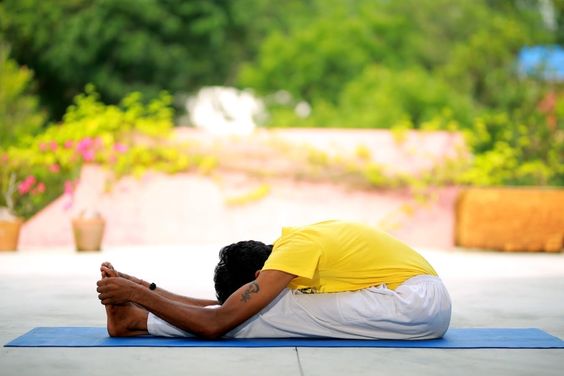
Teaching Tips:
Ayurvedic Approach to Paschimottanasana
The classic yogic text, the ‘Hatha Yoga Pradipika’ mentions how doshas (Ayurvedic understanding of energetic imbalances) have a deep impact on our physical, mental, emotional & spiritual health. When out of balance, these doshas can create energetic shifts that may manifest into physical health conditions if not addressed. Since Yoga works on the body and mind as a whole, it is important to understand Ayurveda approach to Yoga to bring about fundamental shifts in our energy imbalances.
As per Ayurveda, the vata dosha impacts the lower body specifically gastric & colon related health issues. The seat of vata accumulation in the body is the colon which can be easily related as bloating generally gets accumulated in the lower belly. Thus, performing asanas that work on lower body specially, colon and pelvis can help alleviate vata and related manifestations.
Practice of movements like pelvic compression and flexion of the hips and asanas done slowly with a substantial holding time can release excess vata from the system.
Paschimottanasana, the sitting forward bend, at the physical level stimulates the digestive organs, stretches back, shoulders & hamstrings. This posture has a deep calming effect and reduces fatigue. However, from the lens of Ayurveda, Paschimottanasana helps pacify the vata and pitta dosha imbalance. The characteristics in humans that represent high vata and pitta state may include digestive troubles, lean gait, dry skin, curly frizzy hair, cold hands and feet, irregular digestion, tendency to bloat and constipation. Emotionally this energy imbalance in a person may manifest as fearfulness, nervousness and anxiety. Such people are prone to worry and easily get fatigued.
The effect of Paschimottanasana when done with awareness, breath synchronization and proper alignment, not just supports the health physically by optimizing digestion, stimulating colon and releasing excess gas & bloating, it also helps ground a person creating a calming and anxiety reducing effect on the nervous system.
Temple Showcase:
Brihadeeshwara Temple, Thanjavur, Tamil Nadu
Brihadeeshwara Temple, or Thanjai, Periyar Kovil (Thanjavur Big Temple), is a Shiva temple located in Thanjavur in Tamil Nadu. Standing tall for more than 1000 glorious years, the temple is an architectural masterpiece with mysterious stories associated with it. A UNESCO World Heritage Site, and famous as the “Great Living Chola Temples”, the Brihadeeswarar Temple has always appealed to researchers to dig deeper into the mysteries and secrets of this temple.
Built entirely of granite, the temple stands tall at 216 feet. Once a site for royal ceremonies and a sacred place to perform traditional rituals towards the deities, the carvings on the temple’s walls speak the ancient stories from the puranas. The entry of the temple is massive with 3 gates carved with Hindu Gods including Shiva, Parvati, Ganesha, and Vishnu. Representing the marvel of Dravidian architecture, the intricate paintings depicting the life of King Raja Chola I adorn the walls of the huge temple. It is not only the gates which are massive at this temple, but each piece of architecture is a marvel in itself. The statue of monolith Nandi inside the temple is one of the largest in South India. The main temple inside is that of Lord Shiva, also called Sri Vimana. The walls of this temple are decorated with vivid forms of Shiva and Parvati architecture. The temple also has a huge Shivlingas.
The vimana (the Shiva temple) or kalasam of the Thanjavur temple is an engineering masterpiece with a structure that does not cast a shadow on the ground. The architecture is so intricately designed that on deep observation you find hollow hidden loops within the carvings of the Subramanya temple. The mythological references suggest the temple being the oldest to be built with nearly 60,000 tonnes of granite. The temple turns out to be more mysterious than it looks with legendary stories suggesting that it was actually used as a fort as well. The secret back doors and more than 100 underground passages in the complex of the Great Living Chola Temple are no less than a live maze which was then built for security reasons. On the artistic front, the outer walls of Brihadeeshwara Temple are adorned with nearly 81 postures of Bharatnatyam, the traditional classical dance form of South India.
The annual Thanjavur Dance Festival is one of the major attractions of this temple which goes on for 10 days. Classical Indian dancers celebrate the traditional art & dance forms on this festival that happens around Mahashivaratri to celebrate the power of Lord Shiva. Various best performers from across the world look forward to this grand Tanjore Dance festival. Most visitors prefer to combine their temple visit with this time of the year to explore the glory of rich culture of India.
The Brihadeeshwara Temple is just 2 to 3 hours’ drive from the Madurai Ashram and day trips are frequently organised to visit this wonderful temple and the nearby Thanjavur Maratha palace and museum.
Book Review:
Breath: The New Science of a Lost Art,
by James Nestor
James Nestor’s book “Breath” is a must have user manual and a must read for all those who are currently either very curious or concerned about how proper breathing directly affects our immediate health and wellbeing. When I first started reading the book, I found myself resonating with every reference made to the importance of nostril breathing and the negative effects of mouth breathing. Deep down, I had known nostril breathing to be a ‘veda vaakya’ and a fundamental truth, that my body reminded me of every day. Nestor’s deliberately visual writing style provides breath-taking revelations around the immense benefits of practising breathing techniques which we are used to calling as pranayama in yoga philosophy.
Throughout the book, the author creates an interplay between the science of breathing and the history behind our evolution. Each profound statement he writes, for example, “Evolution is not necessarily progress”, is combined with a personal story, which provides readers a visual treat loaded and illustrates the reality of the statement. We end up understanding the how, what, when, and why of breathing in a very simple yet deep way. And that understanding is truly life changing. As I turned the final page of the book, my gratitude and appreciation for every breath we take, increased with the awareness that, slow, fewer breaths, and taken through the nose is the best way to breathe in order to stay healthy. There are plenty of breathing exercises that Nestor shares at the end with a strong hope that knowledge will inspire practice. Everyone should have this book in their library of life.
-Vikram, TTC Graduate
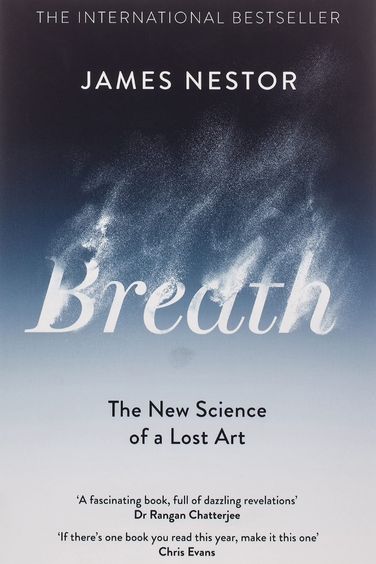
Recipe:
Mango Banana Ice Cream
Swami Vishnudevananda very strongly propagated the idea of proper diet, with special emphasis on the word ‘proper’. A diet, each one of us consumes, but when we eat foods that are in accordance with nature and it’s cycles, we profoundly support not just our body, but our mind, our senses, our feelings, thoughts, and emotions. This means that food can have a deep impact on our entire personality and not just on our physical self.
Simple foods with fewer combinations, and coming directly from nature are the richest sources of prana. Foods that support easy digestion promote body and mind health. Also, the assimilation of such foods becomes much easier when cooked as per Ayurveda cooking principles.
Enjoy this plant-based ice-cream recipe made with simple ingredients coming directly from nature.
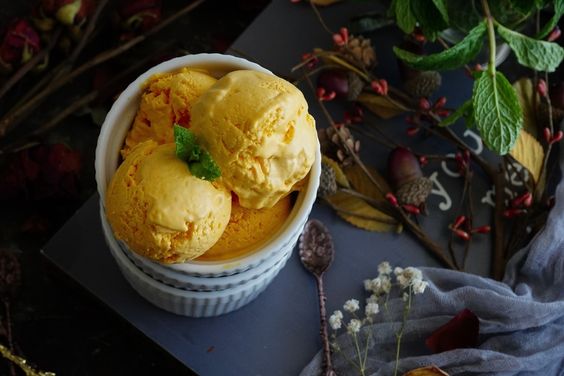
Ingredients (serves 1)
- 1/2 cup frozen bananas
- 2/3 cup frozen mangoes
- 2 tsp shredded coconut
- 2 tsp hemp seeds
- 1 – 2 tbsp water
- Mint leaf (optional)
Instructions
- Place frozen bananas & mangoes in a blender and add 1 tbsp water.
- Blend until creamy. Add more water if required to adjust consistency.
- Top it up with shredded coconut and hemp seeds or blend it with the mixture.
- Add a mint leaf, fresh fruit, or other topping as desired.
“Every human being is the author of his own health or disease.”
– Swami Sivananda

